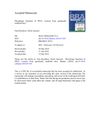Search
forLearn
1 / 1 resultsResearch
5 / 1000+ resultsresearch Alopecia Areata: Animal Models
Alopecia areata is influenced by genetics and immune system factors, and better understanding could improve treatments.
research Integrated Lipidomics in the Secreted Phospholipase A2 Biology
Different sPLA2 enzymes have unique roles in phospholipid metabolism and biological processes.

research Physiological Functions of PP2A: Lessons from Genetically Modified Mice
Mice studies show that Protein Phosphatase 2A is crucial for cell growth, development, and disease prevention.
research Phospholipase A2 in Skin Biology: New Insights from Gene-Manipulated Mice and Lipidomics
Phospholipase A2 enzymes play key roles in skin health and disease.
research Genetically Modified Laboratory Mice with Sebaceous Glands Abnormalities
Genetic changes in mice help understand skin and hair disorders, aiding treatment development for acne and hair loss.
Community Join
3 / 3 resultscommunity New study: Vitamin D counteracts DHT in mice and in human hair organ culture and hair cells
Vitamin D may counteract DHT and help with hair growth, as seen in mice and human hair cultures. Some users discuss using Vitamin D, magnesium, and other supplements for hair health, while others humorously note the success in mice.
community New and Interesting HairLoss Studies/Papers/Reviews
Hair loss treatments discussed include Dutasteride with Ketoconazole, tissue engineering strategies, and androgenetic alopecia therapies. Massage doubles follicular retention, improving treatment effectiveness.
community 3 months on Minoxidil 5% once per day
The user experienced significant hair growth after using minoxidil 5% and finasteride 1.25mg daily for three months, despite initial shedding. They noted improved hair density, especially at the temples, and plan to manage excess hair growth on the forehead.